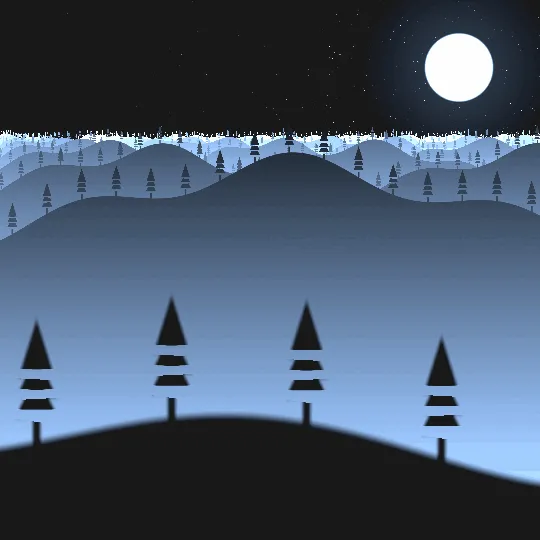I’ve been working on putting together a layered parallax scene as per https://www.youtube.com/watch?v=XaiYKkxvrFM.
I’m a good ways there writing most of the code on my own. I’ve made series of repeating trees across a sloping hill and it’s time for me to start layering them on top with a for loop.
In the tutorial, he wrote all of the shape functions to return vec4 so they include the alpha channel in addition to the colours.
In my code, I wanted to keep the shape functions simple so I left them as returning a float of 1 for pixels in the shape and zero elsewhere (plus blur).
I first started off by adding the layers on top of eachother directly but I realized that that wasn’t going to work because despite the fact I was hardcoding 1.0 into the alpha channel, the layers in front were still going to mix with the colours behind it.
If I want to make the layers in the front darker, then when I add the layer on top of a light layer, it’s just going to inherit the colours below it. This is not the way.
Instead, if I want to add a layer and replace the colour of whatever is underneath, then the best option turns out to be mix().
Typically, you would use mix() to smoothly interpolate between two values based on a value x between 1 and 0. Since we just want to pick one of the two colours, we can mix the colour with the canvas and use 1 in areas of the layer to replace what’s under and use 0 for areas outside the layer keep what was on the canvas the same.
for (float i=0.; i<1.; i+=1./10.) {
float scale = mix(30., 1., i);
float layer = float(layer(uv*scale+vec2(t+i*100., i)-m));
float alpha = layer;
layer *= (1.-i); // darkens front layers
color = mix(color, vec4(layer), alpha);
}
